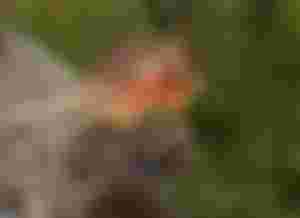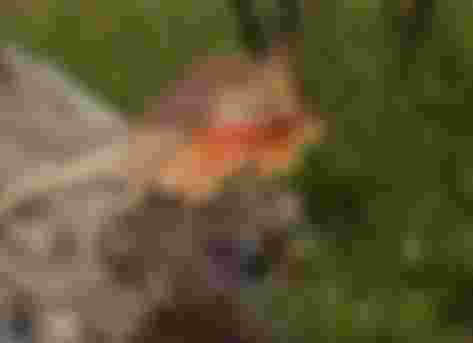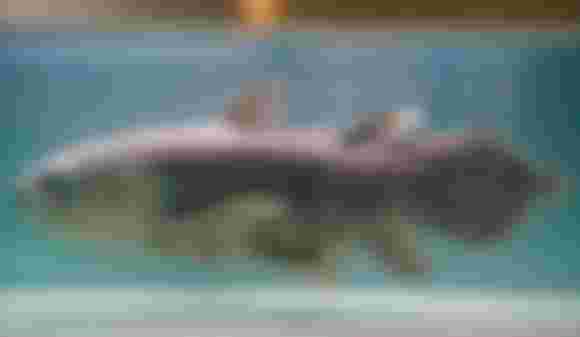I think many of us have never seen these animals. I will describe to you some of the strangest animals
A lizard with a wrinkled neck
A lizard with a wrinkled neck, also known as a wrinkled dragon, got its name from the large "mane" ie the fold of skin that is usually located behind, behind the head and neck. Long cartilage spines support this fold of skin and when the lizard is frightened, it opens its mouth showing light pink or yellow folds, and the folds themselves appear in orange and red shades. They often walk on all fours when on the ground. When they are scared, they start running on all fours and then accelerate by running on their hind legs. The Australian folded dragon uses this fold to repel potential predators.

Dambo octopus
Octopuses o
f the genus "Grimpoteuthis" are also known as Dambo octopuses, made of ear-like feathers protruding from the head (more precisely, from the body), resembling the ears of a flying Walt Disney elephant, Dambo. They are benton creatures, live in extreme depths and are some of the rarest species of octopuses. They can wash a transparent layer of skin at will and the window animals are open, unlike other octopuses.

Angora rabbit
The Angora rabbit is a type of domestic rabbit, bred for its long, soft hair. Rabbits were popular as pets among the French elite in the mid - 1700s and spread to other parts of Europe by the end of the century. They are grown mainly because of their long fleece, which can be removed by cutting or plucking.

Tasmanian tiger
The Tasmanian tiger is the largest known carnivore of modern times. Originally from Australia and New Guinea, it was thought to have become extinct in the 20th century. He is also known as the Tasmanian tiger (because of the tiger stripes on his back) and as the Tasmanian wolf. Some examples can be found in fossil species, whose roots take us back to the early Miocene. The Tasmanian tiger was extinct in Australia hundreds of years before Europeans inhabited the continent, but it survived in Tasmania with other endemic species, including the Tasmanian devil. Large hunts for these animals encouraged by even greater rewards are mostly the biggest culprits for their extinction, but other factors are also disease, getting to know dogs, as well as the entry of people into their natural habitat. Although they are officially marked as an extinct species, sightings of these animals are still reported.

Platypus
The beak is a semi-aquatic mammal that can be found in Eastern Australia. Along with four species of prickly anteater, the beak is one of five mammals that lay eggs instead of giving birth to young. The bizarre appearance of this mammal laying eggs with a duck's beak stunned naturalists when they discovered it. It is one of the few mammals that is poisonous; the male beak has a spur on its hind legs, which release a venom that can cause severe pain to humans. The unique characteristics of the beaker make it an important subject in the study of evolutionary biology, as well as a recognizable symbol of Australia; he appeared as a mascot at national events, and is also on the reverse of an Australian 20-cent coin.

Narwhal
The fish fisherman was named after his characteristic way of perishing, as well as the fleshy growth from the head of the fish that acts as bait. They also have spines protruding from the head, which are movable in all directions. The outgrowth can move back and forth in rapid uneven movements to mimic a prey animal, or act as bait to lure other predators. Since individuals are probably locally rare, finding a partner is very problematic. When scientists first began examining this species of fish, they noticed that all the specimens were female. These specimens were not very small, about twenty centimeters long, and almost every one had a parasite attached. It turns out that these parasites are in fact the remains of a male, because the male of this fish inserts sperm into the female through the bite, and remains attached to it like a parasite while his life is slowly dying out.

Sea dragon
Named after dragons from Chinese mythology, the sea dragon resembles a floating algae as it hovers in water full of algae. The sea dragon, with green, orange and gold shades over the body, is covered with leaf-like accessories, which make it perfectly camouflaged. Only the fluttering of tiny feathers and the movement of his eyes reveals it. They have no teeth or stomach and feed exclusively on shrimp. Also known as Australian seahorses in Australia, they are found in calm, cold water that ranges from 10 to 12 degrees. The South Australian government has protected this species.

Crab yeti
Crab yeti is a type of cancer discovered in 2005 in the Pacific. This decapod (a type of cancer) is about 15 centimeters long, recognizable by its silky blue hair, resembling fur, which covers its legs and tongs. The inventors were hesitant to call it a lobster or a crab. Based on morphology as well as molecular data, this species has created a new genus and family (the species Kiwaidae). The animal has very reduced eyes due to lack of pigment, and was considered blind. "Fur" contains certain "filamentous" bacteria that animals can use to detoxify poisonous minerals from water. Alternatively, it can feed on bacteria, although it is considered a carnivore. Its diet also consists of green algae and small shrimp.

Celacant (Latimeria)
Celacant or latimeria is a marine fish with a bony skeleton (kosljoribe) from the class of sakoperki. Its closest relatives are bivalves and tetrapods. Celacantes are considered the most famous example of living fossils. The fossils of this animal are between 409 and 70 million years old. They were believed to have disappeared during the Cretaceous. Specimens of this species were caught in 1938 off the coast of South Africa and in 1999 near Celebes. The South African species has been re-observed several times in the same region (South Africa, Comoros, Tanzania, Kenya). The average weight of the species that lives along the southeast coast of Africa is 80 kilograms, and its length is up to 2 meters. Adult females are slightly smaller than males. According to the bones in the ear (otoliths), scientists have concluded that this species lives between 80 and 100 years. Their habitat is 90-200 meters below sea level, but they can also be found at depths of up to 700 meters. Their color is dark blue, which protects them from predators. The Indonesian species is brown in color. Their eyes are very sensitive and reflect light. They hunt in areas of deep coral or volcanic reefs, exclusively in very dark conditions










Really weird animal species, I didn’t know this.